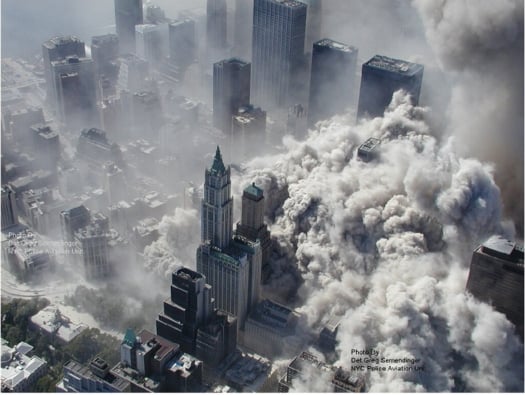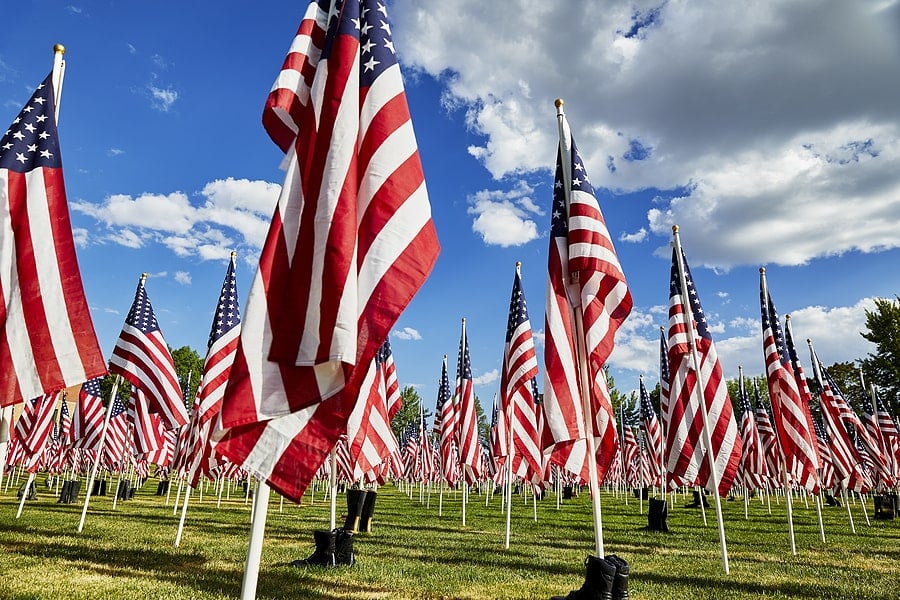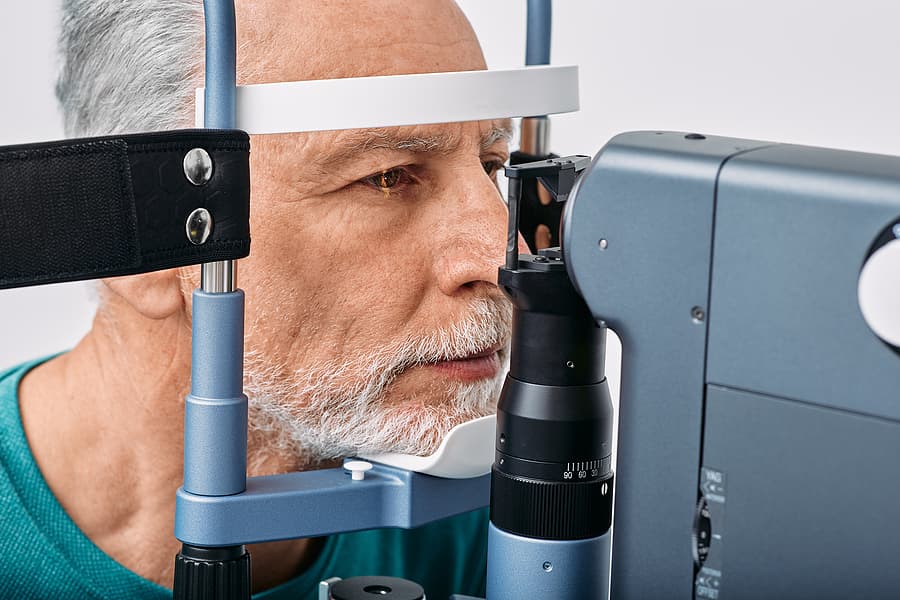How Far Did the Dust Travel on and After 9/11?

For many, 9/11 was a tragedy seen on television. However, for those in lower Manhattan, south of Canal Street, the day filled with unspeakable horrors as the towers collapsed and enveloped a large area surrounding the World Trade Center in a cloud of thick, gray dust. The question remains. How Far Did the Dust Travel on and After 9/11?
Unfortunately, thousands of people working, living, or attending school in the area have since suffered serious medical conditions due to their exposure to the toxins contained in the plume and the dust that settled over the entire lower Manhattan in the many months afterwards.
If you were exposed to the toxic dust that settled over lower Manhattan on 9/11 or after the terrorist attacks on the World Trade Center, let an experienced 9/11 benefits attorney from Hansen & Rosasco assist you. We can determine if you meet the criteria to receive benefits from the WTC Health Program and the September 11 Victim Compensation Fund (VCF). We can help you understand if you were in the area of high exposure for the amount of time required to be eligible for these programs.
How Far Did the Dust Cloud Travel?
There is no exact answer on how far the particles involved in the dust cloud traveled. Dust particulates from the World Trade Center were found at the Empire State Building, three miles away. However, contamination from the plume traveled much further than that. According to one study conducted by Ralph Kahn, a senior research scientist at the Jet Propulsion Laboratory worked with other researchers to determine through the use of specific tools that the plume rose to a height of nearly a mile before it drifted approximately 44 miles downwind the following day.
Are People Who Lived 44 Miles Away Eligible for Compensation, Then?
While the dust plume scattered across many miles, the level of carcinogenic matter in the plume dissipated with time and distance. In short, though some of the particles from the World Trade Center towers were discovered miles away, the greatest risk of suffering medical consequences was most likely to occur among those in an immediate 1.5-mile radius of Ground Zero. Additionally, those who worked in the area as first responders or cleanup workers would have experienced exposure following the attack.
The 9/11 VCF and the WTC Health Program have different disaster exposure areas. The VCF provides compensation for anyone present anywhere in lower Manhattan south of Canal Street or any other location where the 9/11 debris was handled such as the Medical Examiner’s office, Fresh Kills landfill, or along any routes where the 9/11 debris was transported. The WTC Health Program provides coverage for a larger area, making free lifetime 9/11-related healthcare available to anyone south of Houston Street and also parts of Brooklyn, including Brooklyn Heights.
The exposure zone, as determined for use in qualifying affected individuals for participation in the 9/11 benefits programs includes:
- For first responders: Ground Zero, the Staten Island Landfill, and the NYC Chief Medical Examiner’s Office. The exposure for these individuals is a minimum of four hours between September 11, 2001, and July 31, 2002.
- For World Trade Center general responders, including volunteers who worked on the rescue, recovery, and cleanup efforts, the exposure zone includes Ground Zero, the Staten Island Landfill, and certain barge loading piers. Those involved at Ground Zero must have been in the area for at least four hours between September 11 and September 14, 2001; at least 24 hours at the Staten Island Landfill between September 11 and September 30, 2001; and the barge or loading piers at least 80 hours between September 11, 2001, and July 31, 2002.
- Those living, working, or attending school in the disaster area south of Canal Street from September 11, 2001, to July 31, 2002, may apply for the programs if they were exposed to the toxins for at least four days during that time.
What Was in the WTC Dust Plume?
Two days after the terrorist attack, the then-director of the Environmental Protection Agency and the former governor of New Jersey, Christine Todd Whitman, stated that the air over New York contained no significant levels of asbestos. Unfortunately, the plume not only contained asbestos but many other dangerous substances.
Those substances included:
- Cement, and calcium carbonate, which is a highly alkaline residue in concrete
- Particle aggregate from the building materials used in the towers
- Insulation fiber
- Steel and other metal particles, including copper, iron, and titanium
- Gypsum from the drywall
- Cellulose from paper
- Synthetic fibers from the buildings’ carpets and rugs
- Glass fibers
- Human hair
In all, an estimated six million square feet of masonry, five million square feet of painted surfaces, seven million square feet of flooring, 600,000 square feet of window glass, and 200 elevators created a thick pile of dust that settled throughout the disaster area.
The Impacts of the Dust Plume
Around 71,000 individuals who were in the disaster area at the time of the attack or in the months that followed enrolled with the WTC Health Registry in 2003 and 2004. The registry was created to learn more about the mental and physical health effects suffered by those who were near the terrorist attack. More than half of those enrolled reported that they witnessed people running away from the dust cloud. Additionally, more than half of the enrollees also reported that they were caught in the dust cloud themselves.
Sixty-seven percent of the enrollees to the registry reported having suffered respiratory or other conditions due to 9/11 exposure.
Other findings include:
- A month after 9/11, nearly half of the people living in the New York City Disaster Area reported experiencing ear, nose, and throat irritation. In the first week after the attack, hospital admissions among Lower Manhattan residents for respiratory issues increased significantly.
- Around four percent of rescue and recovery workers reported being diagnosed with asthma in the early years after the attack. Those who arrived earliest at Ground Zero continued working in the disaster area during the exposure months, who did not use protective gear in the early days of exposure, or who were caught in the dust cloud account for the majority of the new asthma diagnoses.
- More than half of the more than 3,000 children under 18 who enrolled in the registry experienced new or worsening respiratory conditions two to three years after the attack. Children under five who were caught in the dust plume experienced an increased risk of asthma.
- A study of nearly 2,000 people who were exposed to the toxic dust revealed high rates of respiratory symptoms five to seven years after the attack, including persistent shortness of breath, coughing, wheezing, and sinus or nasal problems. Residents who reported a covering of World Trade Center dust over items inside their homes were two to three times more likely to experience respiratory issues than those who did not report the dust infiltrating their homes.
- Ten years after the attack, office workers who were exposed to the dust from the towers’ collapse were least likely to experience improvements to the respiratory conditions they had suffered. Heavy smokers also showed little improvement in lung function after the attacks.
- The respiratory symptoms experienced in the early days after the attacks did not improve over the next decade for many people. In fact, a decade after the attack, many workers who responded to Ground Zero had taken early retirement or had lost their jobs as a result of declining health. Additionally, as the latency periods of certain cancers expired, new diagnoses of lung cancers and mesothelioma began to appear among responders and survivors.
The problems resulting from the toxic dust plume continue 20 years after the attacks, as those who were exposed continue to receive new diagnoses, including cancer.
Additionally, exposure to the dust plume resulted in mental health issues. Researchers found that those who had intense exposure to the plume, such as being caught in it or finding it covering the surfaces of their homes, had an increased risk of suffering from post-traumatic stress disorder when compared to those whose involvement in the plume was less intense. This increased risk lasted for many years after the attack.
Were You Exposed to the World Trade Center Dust Plume on 9/11?



